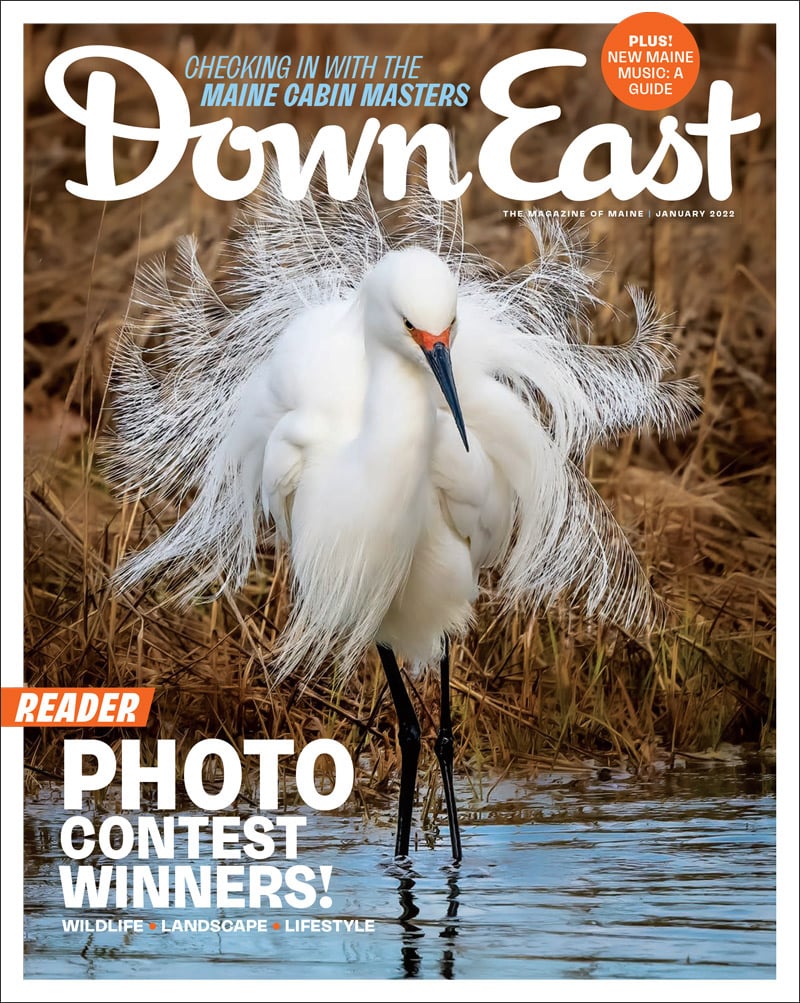By Will Grunewald
Photograph courtesy of Mayo Street Arts
From our January 2022 issue
Since Mayo Street Arts opened in Portland’s East Bayside in 2009, the former St. Ansgar Church has become a pilgrimage site for performing artists outside the mainstream — vaudevillians, puppeteers, fiddle bands, jugglers, immigrant folk musicians from the Middle East and Africa. Now, for the first time, someone other than founder Blainor McGough is leading the nonprofit organization, after she stepped down from the executive-director role last year. Filling her shoes is Ian Bannon, former managing director of South Paris’s Celebration Barn Theater. He’s no stranger to Mayo Street, having put on puppet shows there for years. His goal is to preserve the center’s quirky artistic identity while connecting with the surrounding community.
Do you remember your first visit to Mayo Street Arts?
Oh, I wish I did. I have a terrible memory for that sort of thing. But it was early in the history of the organization. I already knew Blainor before then, through puppetry circles. I’ve been a longtime performer and teacher and donor and audience member and volunteer here — this is the de facto home of puppetry in Maine — so it’s always been really close to my heart.
How does Mayo Street fit into the greater Maine arts scene?
In a way, we’re the old guard — we preserve heritage forms, traditional forms that new Mainers are bringing here with them, and sort of eccentric forms, like silent films with live scores and puppetry, that are more on the periphery. Sometimes there’s an edge to arts that live on the periphery — they can be a little off-kilter. And the other essential element here is the neighborhood. There are plenty of citywide arts organizations, but Mayo Street really serves a distinct neighborhood. There’s a lot of need in Kennedy Park, being largely made up of Portland Housing Authority residents. It’s important to us that we’re accessible to everybody and that we serve as a community hub.
You’re describing a sort of dual mission, arts center and community center.
I didn’t come into this job saying, “This place is going to be a grand new theater!” I love Mayo Street’s artistic aesthetic already. My focus has been to look at ways to engage residents in a more year-round fashion. We’ve had our flagship summer youth program for years — it’s literacy-based arts programming, free by invitation to kids in this neighborhood. This year, we’ve introduced a partnership with East End Community School that brings three performing artists and ensembles from out of state to the school for performances and a series of custom-tailored workshops that fit the curriculum. We’ve also been hosting a family English class run by Portland Adult Ed, serving non-English-speaking mothers of first and second graders from East End Community School. And I’m working toward after-school programming for the kids. There are a lot of great organizations that offer that sort of thing, and all of them have wait lists right now due to COVID, so there’s a pressing need.
What impact has the pandemic had on Mayo Street?
We just reopened for indoor shows in September, and we’re requiring masking as well as proof of vaccination or a negative test. Before that, Blainor got the ball rolling on a lot of accessibility improvements that programming funding normally would have taken precedence over. We built a new addition for a wheelchair lift, there’s a new welcome mural outside, and the final phase is creating multilingual signage around the space so that it’s more accessible to our non-English-speaking neighbors.
So accessibility in a broad sense, beyond only physical accessibility.
Right, and a related example is that we’ve launched our Traditional Arts Network, in collaboration with [Rockport-based nonprofit] Cultural Resources. It’s designed to support new Mainers carrying cultural and artistic traditions with them who haven’t yet found life as a professional artist in Maine. At its core, Mayo Street Arts is hand-hewn — quite literally hand-hewn, built into the bones of a 130-year-old church. And the art forms here feel hand-hewn too. We operate at a human level. It’s a small organization. It’s a small performing-arts space. We want people to come in here and hopefully feel a sort of welcoming love instantly.




